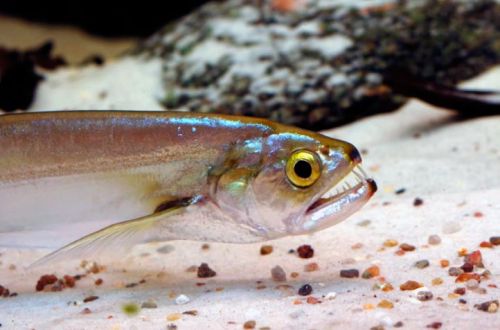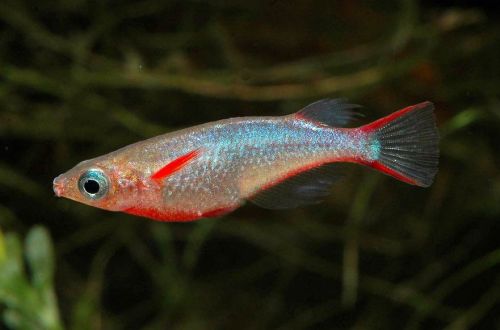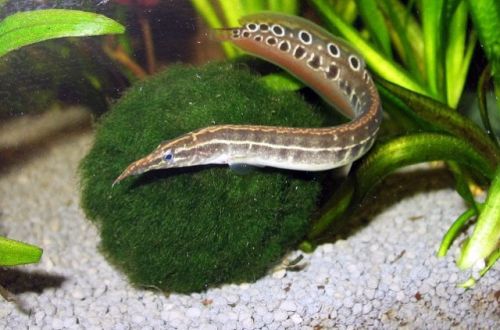
Biara
The needle-toothed fish, Biara or Chaparin, scientific name Rhaphiodon vulpinus, belongs to the Cynodontidae family. Predatory large fish, not intended for beginner aquarists. Maintenance is possible only in large aquariums, the maintenance of which requires significant financial costs.

Contents
Habitat
It comes from South America from the Amazon basin, mainly from Brazil. Some populations have also been found in tributaries of the Orinoco. It is found everywhere both in river channels and floodplain lakes, in flooded areas of the tropical forest, etc.
Brief information:
- The volume of the aquarium – from 1000 liters.
- Temperature – 24-28°C
- Value pH — 6.0–8.0
- Water hardness – soft to medium hard (2-15 dGH)
- Substrate type — stony
- Lighting – moderate
- Brackish water – no
- Water movement – moderate or weak
- The size of the fish is up to 30 cm.
- Meals – live fish, fresh or frozen meat products
- Temperament – predator, incompatible with other smaller fish
- Content both individually and in a small group
Description
Adult individuals reach a length of 60–80 cm. Predatory features are clearly manifested in their appearance. Fish have an elongated thin body with a large head and a huge mouth studded with long sharp teeth. The dorsal and anal fins are short and shifted closer to the tail. The pelvic fins are large and shaped like wings. All this helps the fish to instantly pick up speed and grab prey. The color is silver, the back is gray.
Food
Carnivorous predator. Exported from the wild, individuals feed exclusively on live fish. Biar raised in artificial environments tend to accept bits of meat or dead fish. Animal products and poultry meat should not be used as they contain indigestible proteins.
Maintenance and care, arrangement of the aquarium
Such a large fish needs a very large and spacious aquarium with a volume of at least 1000 liters. It should be designed in such a way as to resemble a river bed with a sandy or rocky substrate, decorated with snags in the form of branches, roots and tree trunks.
Needle-toothed fish originate from flowing waters, therefore they are not tolerant of the accumulation of organic waste and require very clean water rich in dissolved oxygen. They should never be introduced into a biologically immature aquarium. Maintaining stable water conditions depends entirely on the smooth operation of special equipment (filtering, disinfection, monitoring systems, etc.). The selection, installation and maintenance of such water treatment plants is expensive and requires a certain amount of experience.
Behavior and Compatibility
Recommended to be kept alone or in a small group, or combined with fish of comparable size that would not be considered potential prey by Biara.
Breeding / breeding
In nature, the mating season is seasonal. Spawning occurs from October to February in flooded riparian forest areas when water levels are high. Breeding in home aquaria does not occur.
Fish diseases
No diseases typical of this fish species were noted. Diseases manifest themselves only when the conditions of detention deteriorate or when feeding poor-quality or unsuitable products.





